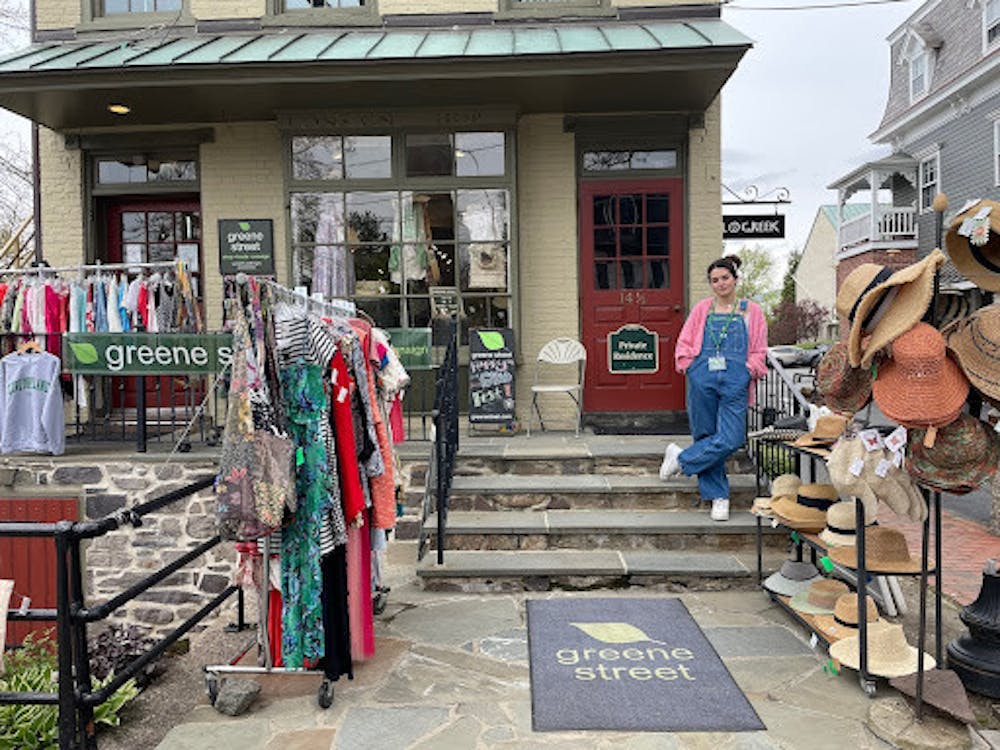By Parisa Burton
Staff Writer
This story was produced in collaboration with CivicStory and the New Jersey Sustainability Reporting Hub as part of the Ecology-Justice Reporting Fellowship.
Fast fashion meets the demand for affordable clothing among cost-conscious consumers. This is especially true for younger generations, who prefer online shopping to traditional brick and mortar stores, showing that their pandemic habits are persisting. The fast fashion giant Shein, for instance, gained overwhelming popularity during the COVID-19 pandemic thanks in part to an aggressive social media strategy aimed at young people. Inundated with ads on their timelines, trend-driven scrollers frequented the site to explore the latest styles.
However, the appeal of fast fashion stores like Shein often conceals their detrimental impact on the environment. Of the 100 billion fast fashion garments produced each year, 92 million tons end up in landfills.
And according to the workers’ rights organization Fashion Checker, 93% of clothing brands, including Shein and H&M, do not pay their garment workers livable wages.
Fast fashion retailers like Shein often operate under a small-batch manufacturing model, releasing inventory in initial batches of 100 to 200 and then monitoring user engagement, including hovers, clicks and shopping cart additions, to gauge popularity. This on-demand model allows them to act in real time and place orders only on popular items.
The flaw with this model lies in its dependence on trends. Trends are short-lived, and fashion-forward young people quickly retire their garments in an effort to stay current, perpetuating the damaging cycle of clothing waste.
Luckily, there is a solution. Studies show that if every consumer opted for one second-hand item this year instead of a new one, it would decrease CO2 emissions by more than 2 billion pounds. As young people become more environmentally conscious, secondhand shopping is seeing a massive increase in popularity.
In 2023, the U.S. secondhand apparel market grew 11%, seven times faster than the broader retail market. In New Jersey alone, there are roughly 276 thrift stores to explore. Even branded resale saw a 31% surge in 2023, allowing companies like Zara, Anthropologie and Lululemon to not only boost their sustainability efforts but increase their revenue and customer base.
According to the online consignment company ThredUp’s annual Resale Report, customers often opt for secondhand clothing for its durability and high quality, which stands in stark contrast to fast fashion’s transient nature. ThredUp also found that 38% of customers shopped secondhand to afford higher-end brands in 2023, with three in four customers prioritizing value in their annual clothing expenditure. Above all, the report demonstrated a sustainable pattern among young shoppers: While 25% of all ThredUp customers resold their apparel in 2023, the figure jumped to 33% for Gen Z and millennials.
Clearly, there is demand. In New Jersey, secondhand stores are working to meet the moment. One of the state’s standout second-hand stores is Greene Street consignment, comprising eight stores scattered across New Jersey and the Philadelphia area. In New Jersey, you can find them in Princeton, Lambertville and Red Bank.
Like many such businesses, Greene Street is not just a sustainable shopping alternative. It is a community center of sorts, demonstrating ways that consignment shops can make a broad impact that goes beyond the environment. Items are sourced from the community and deliberately selected to promote sustainability.
“A lot of people who live in town consign with us regularly, helping to keep clothing waste out of landfills as we offer a sustainable alternative,” said Elyse Lamkin, assistant store manager of the Lambertville location.
As such, Greene Street locations become intertwined with the people they serve. “The pieces available at each location offer a glimpse into the local community from which they’re sourced,” said frequent shopper Soraya Fahim, 25.
“We want to keep the store stocked with goods we feel good about,” said Beth Studstill, store manager of the Princeton location. “We hand-select merchandise from the public and try to avoid real fur and take in a lot of vegan leather alternatives.”
When shoppers are invested in sustainability, businesses are incentivized to oblige them. In an effort to address deforestation, Greene Street offers branded reusable tote bags, working with One Tree Planted to ensure the planting of one tree for every bag purchased. “So far, we’ve donated $1,100 to plant trees,” Studhill said.
In the summers, Greene Street supports local biodiversity initiatives by advocating for pollinator gardens, providing instructional steps to shoppers on how to start one. “We post pictures of the areas where people have planted these gardens and try to keep communities informed through the website,” Studhill said.
These small steps add up. Not only have shoppers responded well to seeing a local store invest in its community’s health, but young people are the ones leading the charge. “Greene Street creates a space where community members can come together, bond over their love for fashion, and contribute to a greener future,” Fahim said.
The “fashion” element is key to the success of secondhand shops, which are keen to position themselves as purveyors of classic clothing that transcends the whims of the moment. Fahim’s favorite finds include a pair of new Manolo Blahniks for only $65, a desert rose-colored silk Anthropologie tiered skirt, Stuart Weitzman pearl heels and vintage Burberry heels.
And as “fashion over freshness” becomes an unofficial mantra for young shoppers, sustainable commerce becomes more economically viable for business owners. According to Studstill, one of the business’s greatest challenges is to keep merchandise coming into the store. Consignment relies heavily on community support to thrive, creating a two-way street for shoppers and sellers that strengthens a community’s bond without shipping packages, cheap labor or land pollution.
“So many of the people who live locally come into the store multiple times a week and bring in their clothes,” Studstill said. “Without an option to consign, there would be a lot more clothing waste in the community.”







